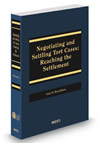9/26/2016· Environment
Just Who Is At Risk? The Ethics of Environmental Regulation
By: Dr. Ted Simon
The willingness to view risk as part of daily life has vanished. A risk-averse mindset among environmental regulators engenders confusion between the ethics of intention and the ethics of consequence, leading to the elevation of the precautionary principle with unintended and often unfortunate outcomes. Environmental risk assessment is conservative, but the actual level of conservatism cannot be determined. High-end exposure assumptions and current toxicity criteria from the USEPA, based on linear extrapolation for carcinogens and default uncertainty factors for systemic toxicants, obscure the degree of conservatism in risk assessments. Ideally, one could choose a percentile of the target population to include within environmental standards, but this choice is complicated by the food, pharmaceutical and advertising industries, whose activities, inadvertent or not, often promote maladaptive and unhealthy lifestyle choices.














